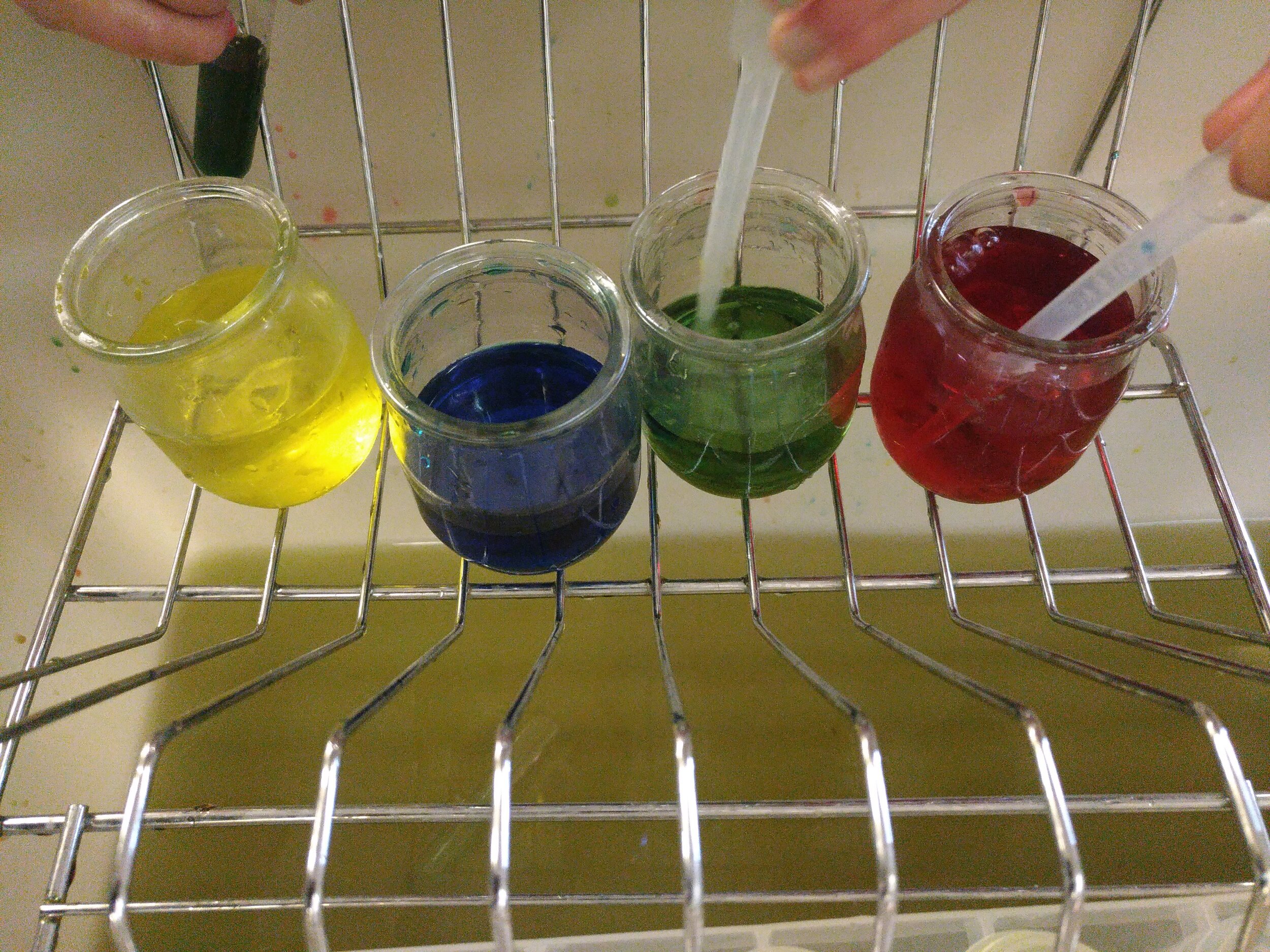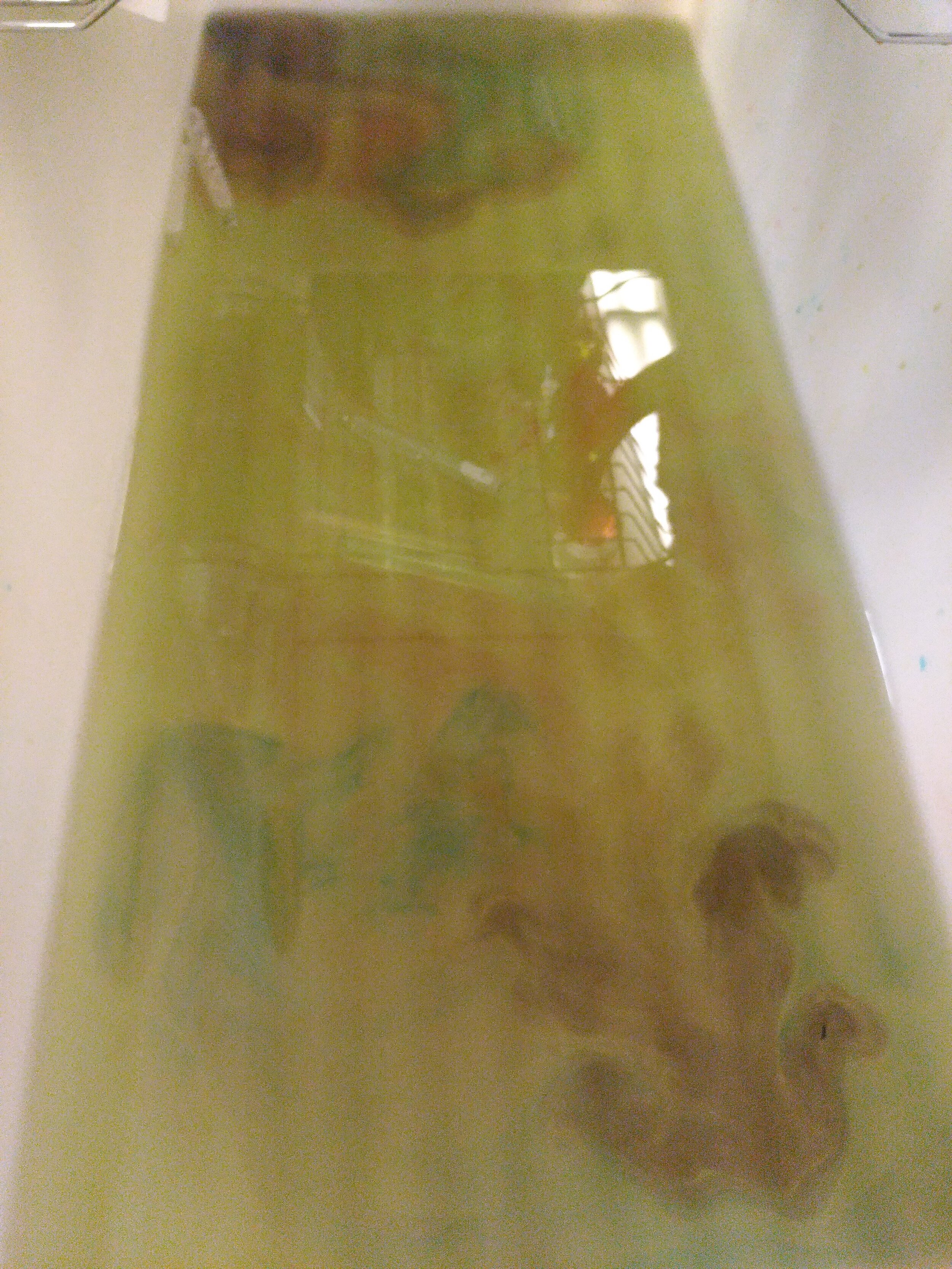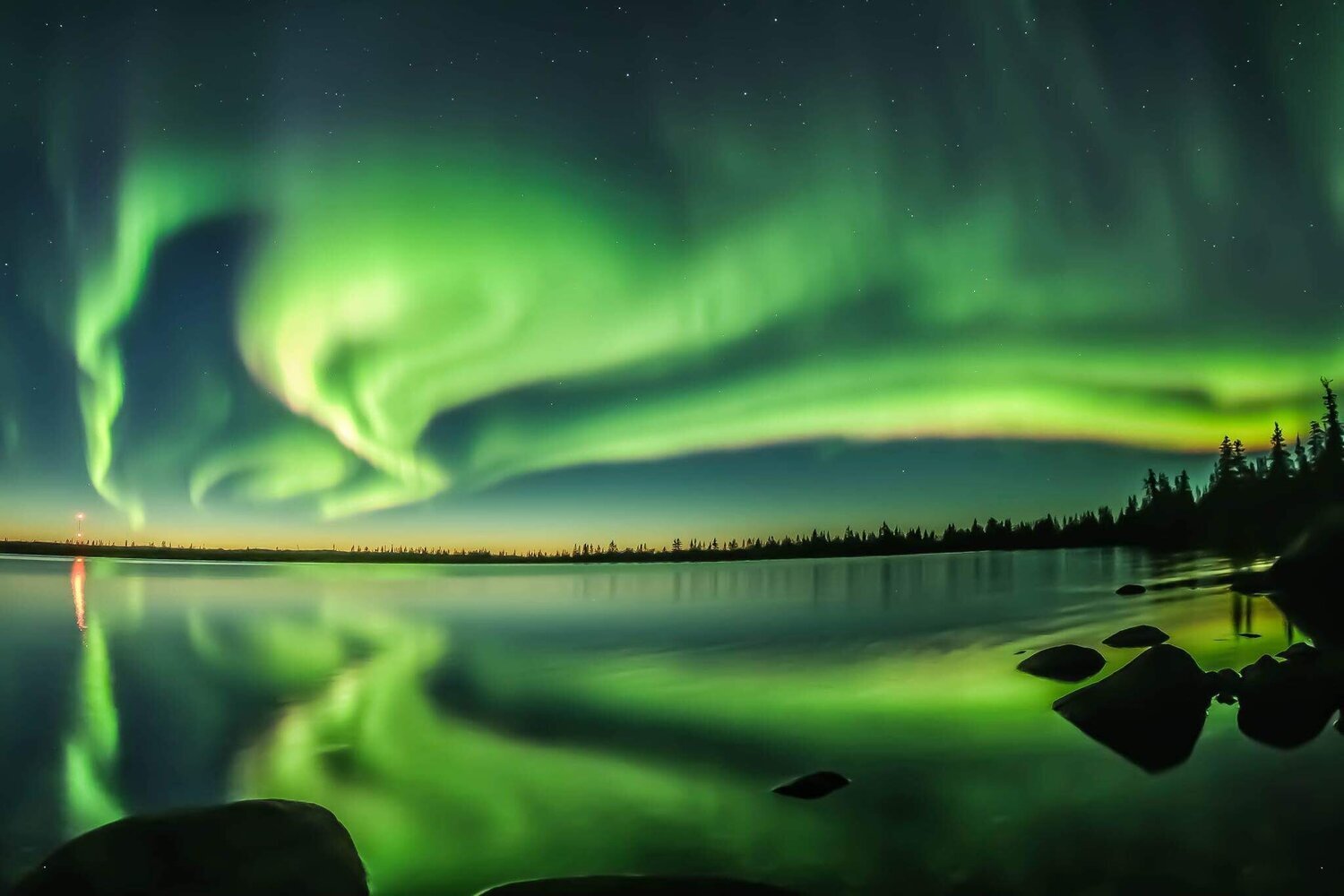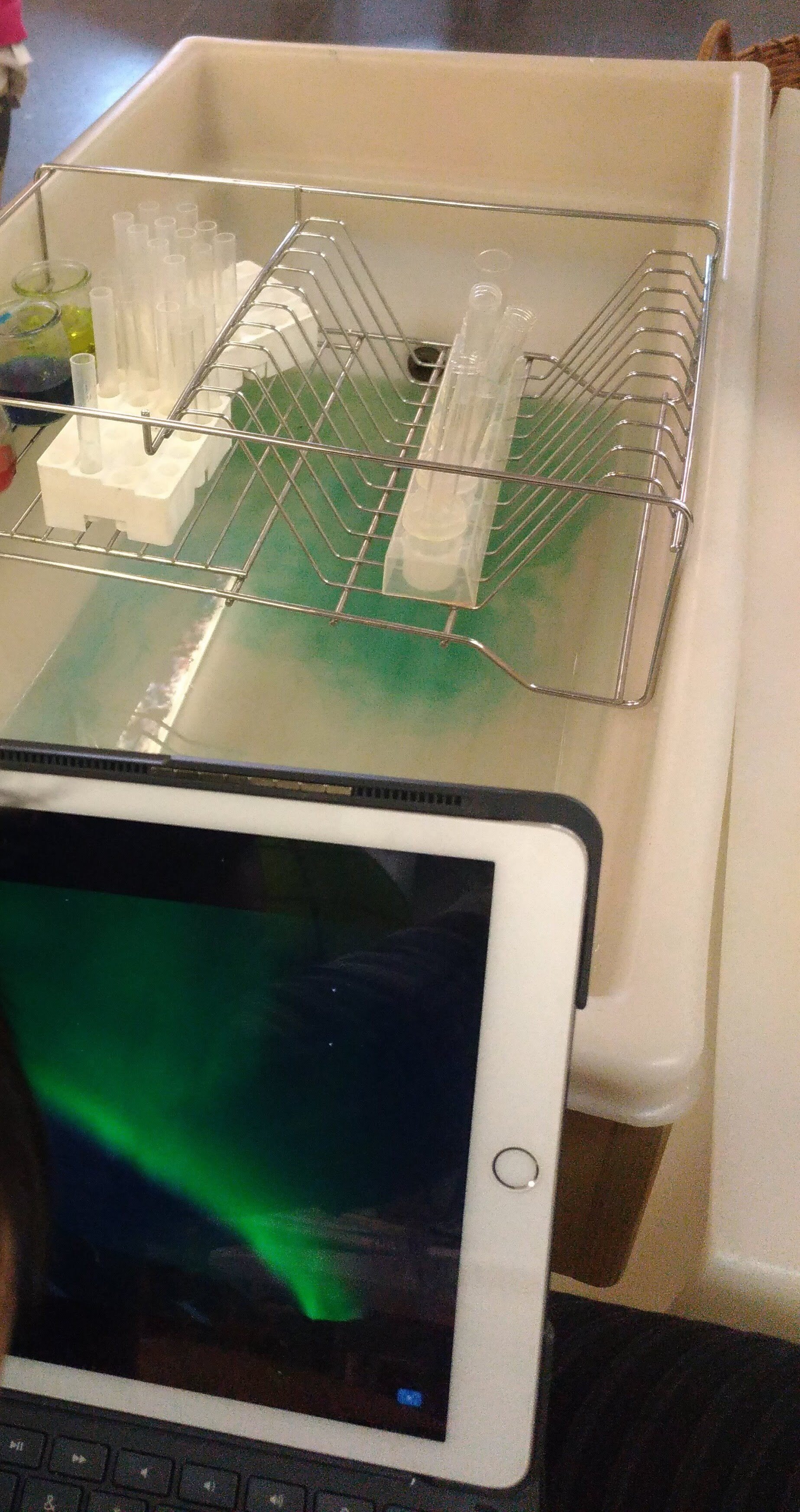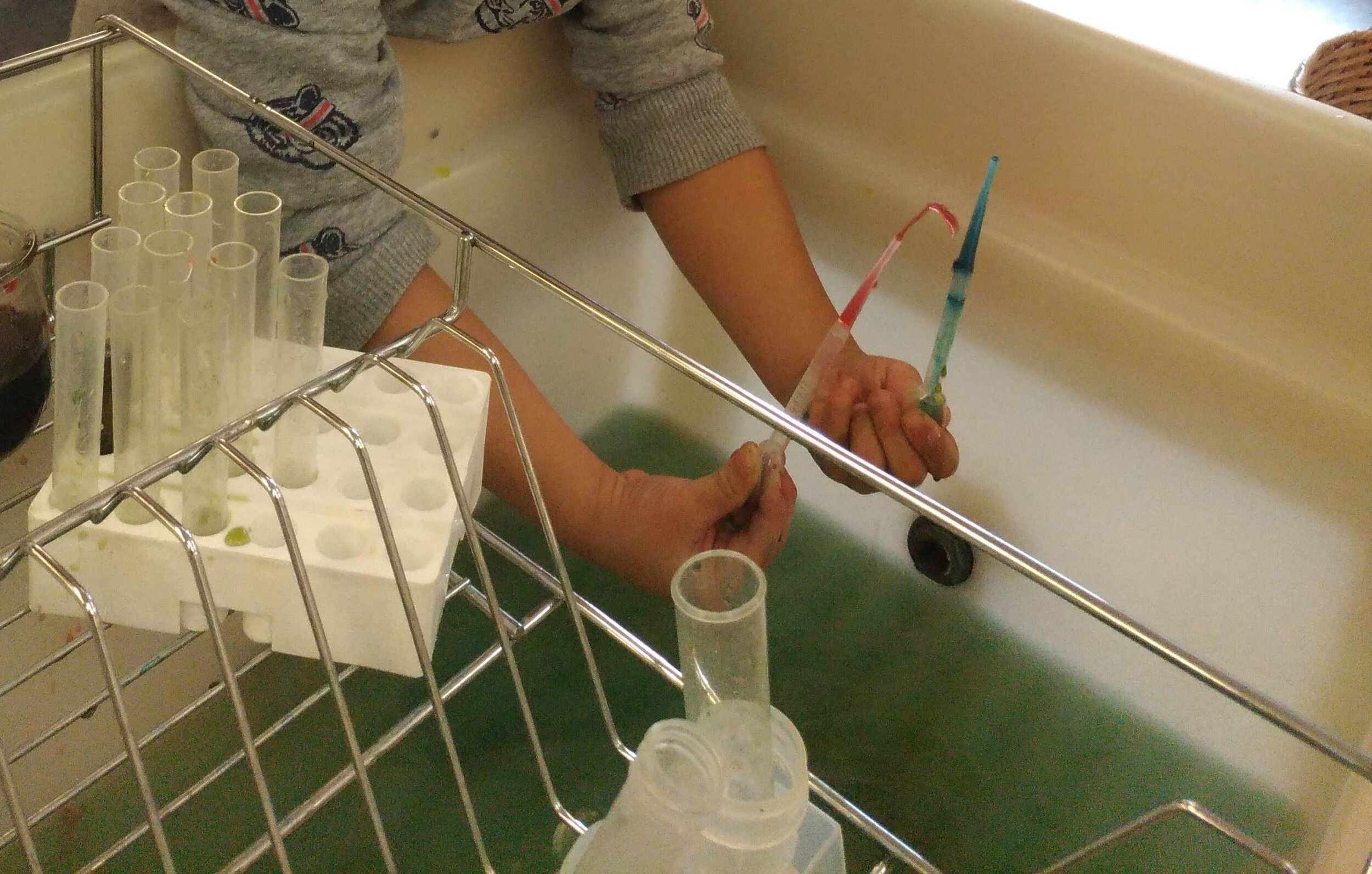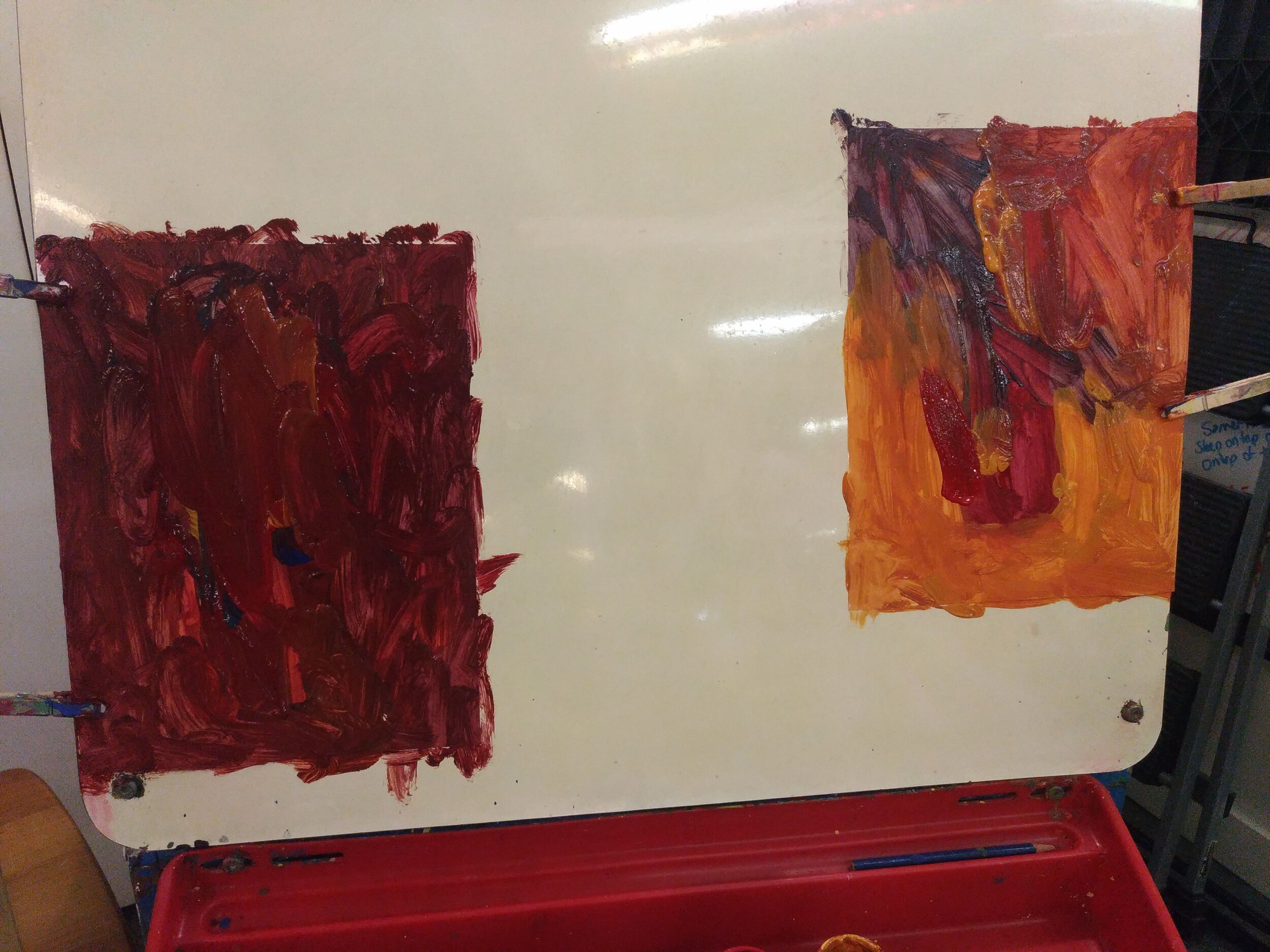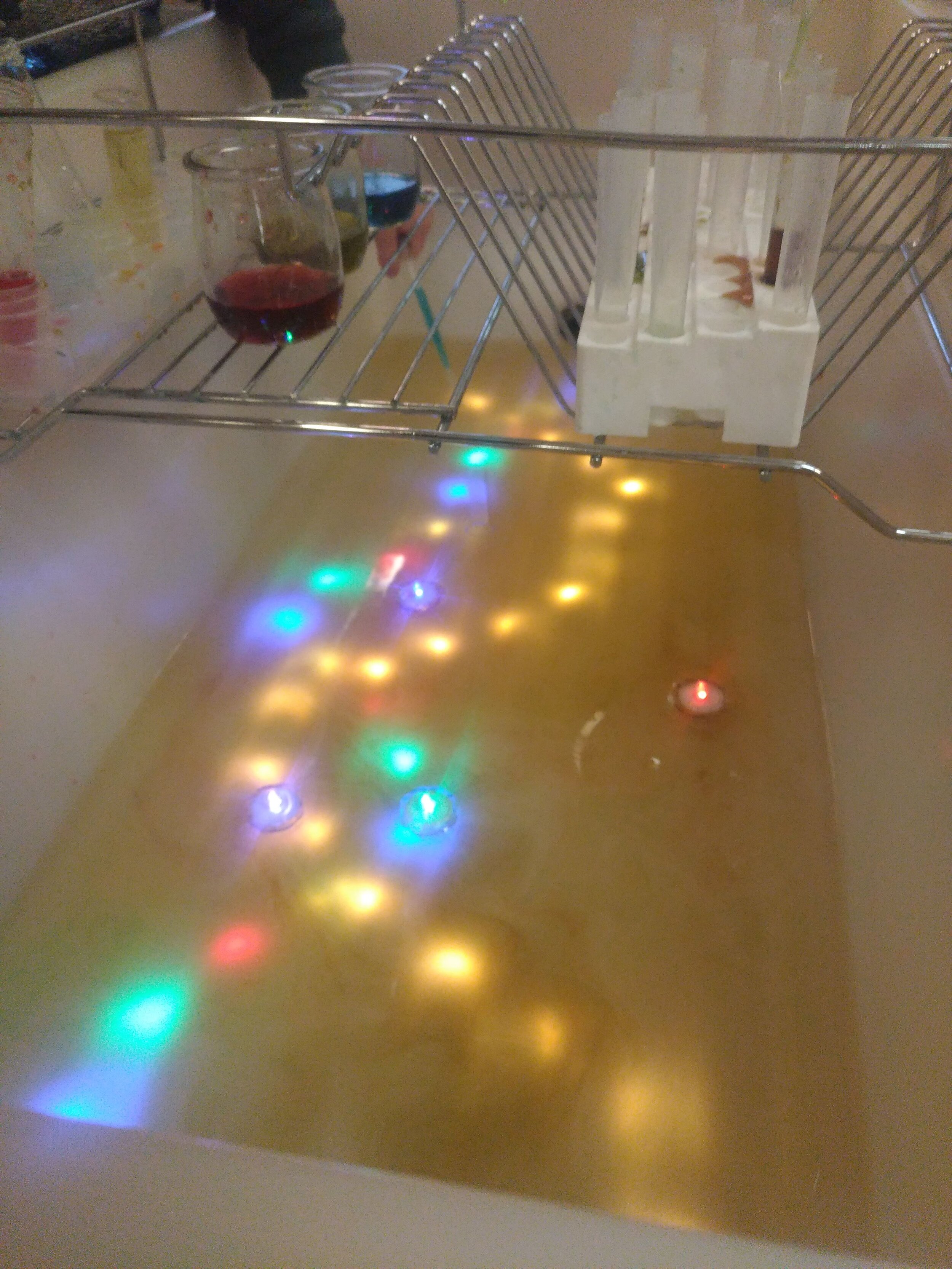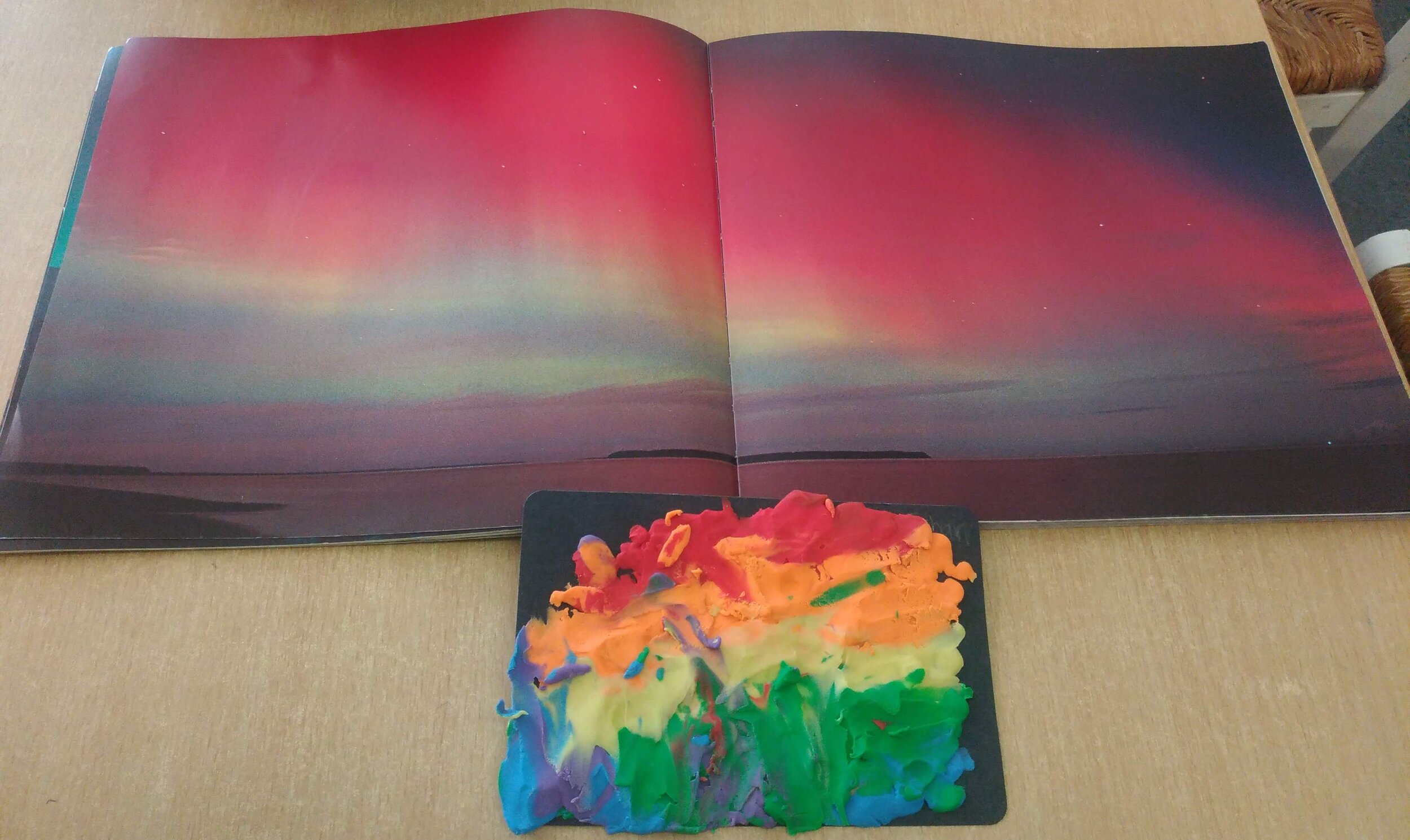The Fascinating Aurora Borealis
The teachers have decided to create a water table setup to provoke deeper inquiry of colours and mixing. One of our children is always eager to start their day at the water table and for the most part usually spends their time emptying out the freshly made jars of colour and mixing it up in the water table. The teachers often wonder about their curiosity about emptying the jars into the water table so quickly. Today Ms. Caren takes a few minutes to observe the play at the water table.
Ms. Caren asks, “What do like about mixing the colours all together like that?”
The child take a few moments to contemplate the question, “It reminds me of Aurora Borealis!”
Ms. Caren is unsure that she heard correctly and has to do some further questioning abou whether this child truly meant to inference Aurora Borealis. Ms. Sue and Charmayne nod in agreement, they know that this child is referring to the Northern lights. “You’re like our real scientist around here!” Comments Ms. Charmayne.
Ms. Caren asks, “How do you know about Aurora Borealis?” The child responds “I don’t know” and continues to mix the colours together and add it to larger pool of water. “The Aurora comes out at night.”
Ms. Caren suggests that we research to find a photo of the Northern Lights so that we could see the similarities between the real Aurora Borealis and creation in the water table. Several other children are curious about what will pop up on the computer screen and come over to see what is going on. Another child takes a look at the photo, “Hey it’s the North of Lights!”
Ms. Caren is amazed, to see these children so excited about the lights!
More children are starting to show interest in the colour mixing and creation of Aurora Borealis at the water table. Ms. Caren asks, “Do you know about Aurora Borealis?”
“Oh yes!” Another child hastily replies and then goes on further, “Do you know you can whistle to make the Northern lights dance?” Ms. Caren responds, “No I didn’t know that, wow, you guys are really teaching me a lot about the Northern Lights this morning!”
Ms. Caren takes another look at the water table where these little scientists are mixing and swirling colour in the pool of water. As Ms. Caren is observing the children hard at work pouring just enough red and then three drops of blue together, she asks, “What colours do you need to make Aurora?” The children come up with a variety of colours, “Purple! Brown! Orange! Yellow! Blue!” Ms. Caren provokes the children to think a bit more about their colour mixing. “How can you make orange?” The children continue mixing, “Ummmm, 10 drops of red and 4 drops of yellow.”
Hungry tummies quickly takes the interest of the children away from the water table, however, the first interested child is quick to make their way back to the water table after snack time. Ms. Caren wonders if this child would like to think about Aurora Borealis in another area of the classroom. “Do you want to paint Aurora Borealis?” The child quickly runs over to the easel and begins adding colour to their paper, at times even using two paintbrushes at the same time to get the colours to swirl together as they did in the water table. Another interested child notices the painting at the easel, “I want to paint too!” Ms. Caren remembers that this child was also interested in the ‘North of lights’ earlier at the water table, “Sure! We’re painting Aurora Borealis, did you want to think about painting that too?” The child eagerly responds, “Yes, I want to paint Aurora Borealis too!” Together the two converse as they continue representing Aurora. The first child paints a stroke of colour across their painting. “This is a shooting star!” The other child then takes a few moments to take in their painting, “Look at my Aurora Borealis, it has purple!” The first child then takes a minute to look at their painting, “Mine has red, orange, and blue and yellow.” The two finish up their masterpieces. they put away their paintbrushes and are ready to explore other areas of the classroom. “There! I finished mine, Aurora Borealis!”
Ms. Caren’s Reflection:
Wow! What an amazing, truly responsive and emergent moment to share with these children. I loved how the child’s keen interest quickly transpired to excitement amongst several children in the class. My excitement in the moment I shared with this child, I am certain, was also picked up by the children. Once given the opportunity to reflect I could take away a couple of different learnings from this extraordinary moment. One, just that morning teachers were trying to decide on the continuation of this setup, in our dialogue with one another we came to understand that it was our agenda for wanting to change the setup at the water table, ultimately the children were still enjoying the materials, pouring and mixing. In thinking it through we decided to change up some of the containers and so how clearly did this moment demonstrate the necessity of following a child’s lead and the importance of reflective practice. Two, at times we began to wonder about the learning coming from the first child’s abundance of time spent at the water table, my purpose to sit at the water table began with a curiosity about their consistent need to ‘dump’ out the colours into the water table. My questions were enough to provoke this child to describe their thinking process about the colours and the water. This could have been so easily missed had we followed our own agenda as opposed to the thoughts and ideas of the children. It was a proud moment as I realized our teaching team’s strength in knowing when to slow down, our time committed to observation and reflection allowed this inquiry to continue on for these children. I am excited to bring this documentation back to the children and see how they might deepen their learning through the simple provocation of tubes, colours and the water table.
Connecting to the Early Learning Framework:
p. 66 Living Inquiry: Engagement with others, materials, and the world.
Children construct meaning as they engage with materials, other children and adults, the environment, the community and the world.
Pathway: Reconnection to land, place.
Children and educators consider what it means to be in relationship with land, including the stories of land that are told and the stories that have been silenced.
Crititically Reflective Questions:
How might I contribute to children’s reconnection with land and place?
I wonder how to bring this moment back to the children and together deepen our understanding of Aurora Borealis. What does it’s history entail?
What are the children’s stories of the land?
How does it connect to the people and it’s land? Why is this child so connected to this idea and why are the children so connected to the Northern Lights despite it’s physical distance from our land.
Although during this unprecedented time in our world visiting the Aurora Borealis is not possible, we invite you to take a look virtually at this stunning experience with nature:)
https://youtu.be/Vdb9IndsSXk

